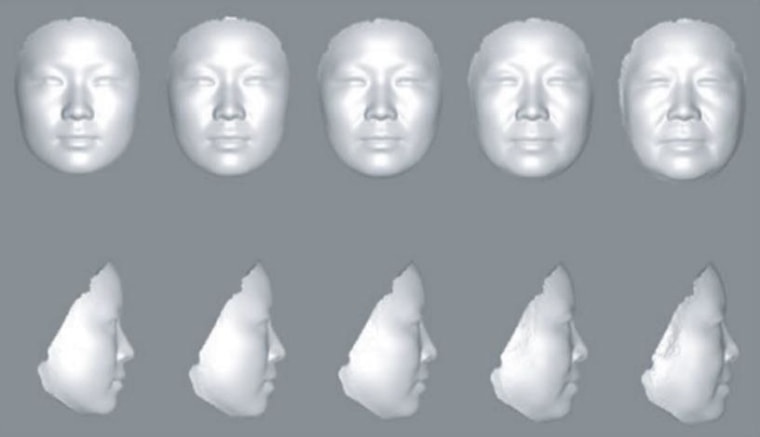Scientists say a 3-D analysis of wrinkles and other signs of aging can reveal a person's physiological age based only on an image of his or her face.
The researchers also found that levels of several biological markers in people's blood are associated with the markers of aging that appear on people's faces. For instance, women with older-looking faces tend to have higher levels of "bad" cholesterol, the researchers found.
"3-D facial images can really tell your biological age," said the study's senior researcher, Jing-Dong Han, a professor of computational biology at the Chinese Academy of Sciences and the Max Planck Partner Institute in Shanghai. "It's really more accurate than a physical exam." [8 Tips for Healthy Aging]

In the study, the researchers used a special camera, called the 3dMDface System, to take 3-D facial scans of 332 Chinese people. The scientists also collected blood samples from the participants, who ranged in age from 17 to 77 years old.
An analysis of the 3-D scans revealed several patterns: As a person grows older, the mouth grows longer, the nose becomes wider, the forehead narrows, and the distances between the mouth and nose increases. The corners of the eyes also droop with age, likely because of gravity's relentless pull, the scientists said.
Young faces are smoother and thinner than old faces, while old faces have more sagging and fat accumulation and fuller cheeks than young faces.
The researchers created a mathematical model to calculate each person's age based on the 3-D scans. Results showed that people younger than 40 can look up to six years younger or six years older than their actual ages, based on their facial features. For example, 30-year-olds might look as young as 24 or as old as 36. Variation increased in people older than 40, the researchers said.
The researchers acknowledged that they studied only Chinese subjects and did not know "whether similar trends are present in other ethnic groups."
Han said the technique could help doctors tailor treatments for individuals. For example, people who have reached physiological ages that are older than their chronological age might receive treatment more suited for older people, she said.
The study was published online on Tuesday in the Nature journal Cell Research.
— Laura Geggel, LiveScience
This is a condensed version of a report from LiveScience. Read the full report. Follow Laura Geggel on Twitter. Follow LiveScience on Twitter, Facebook and Google+.